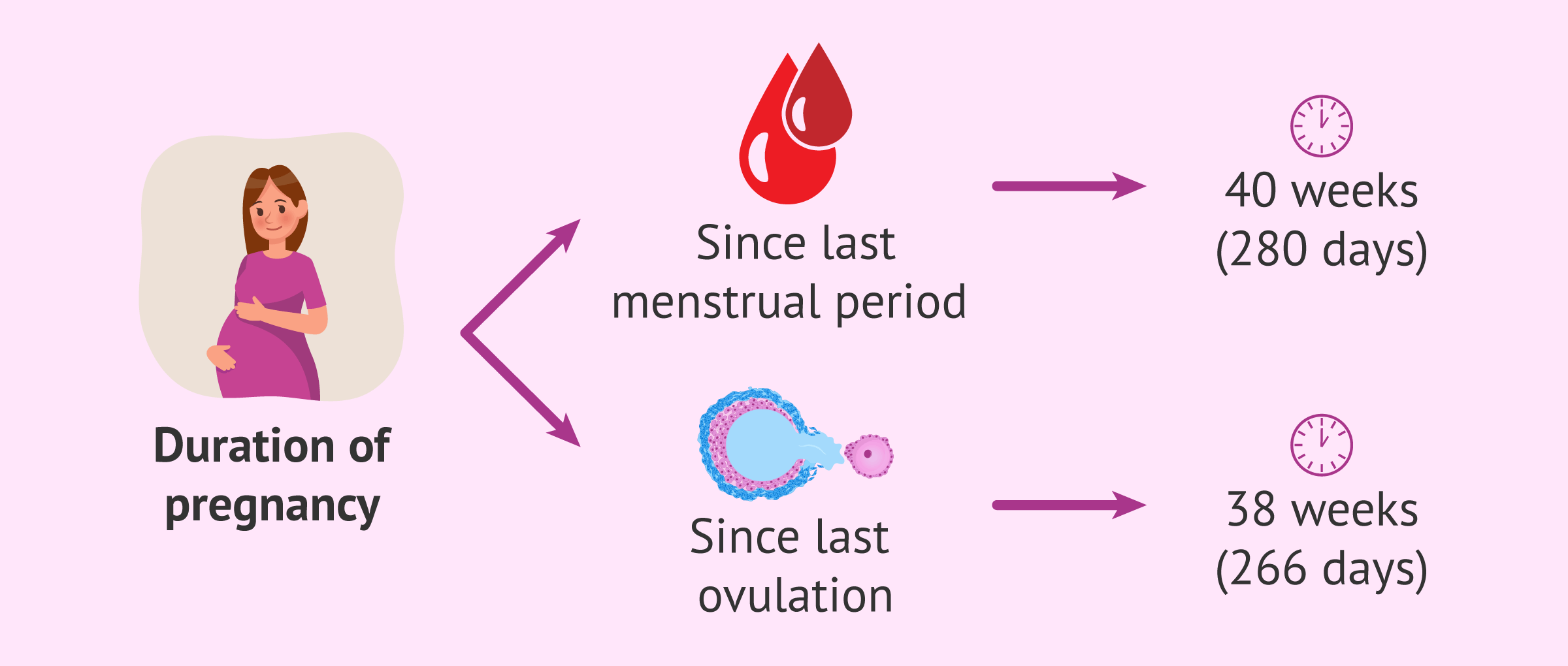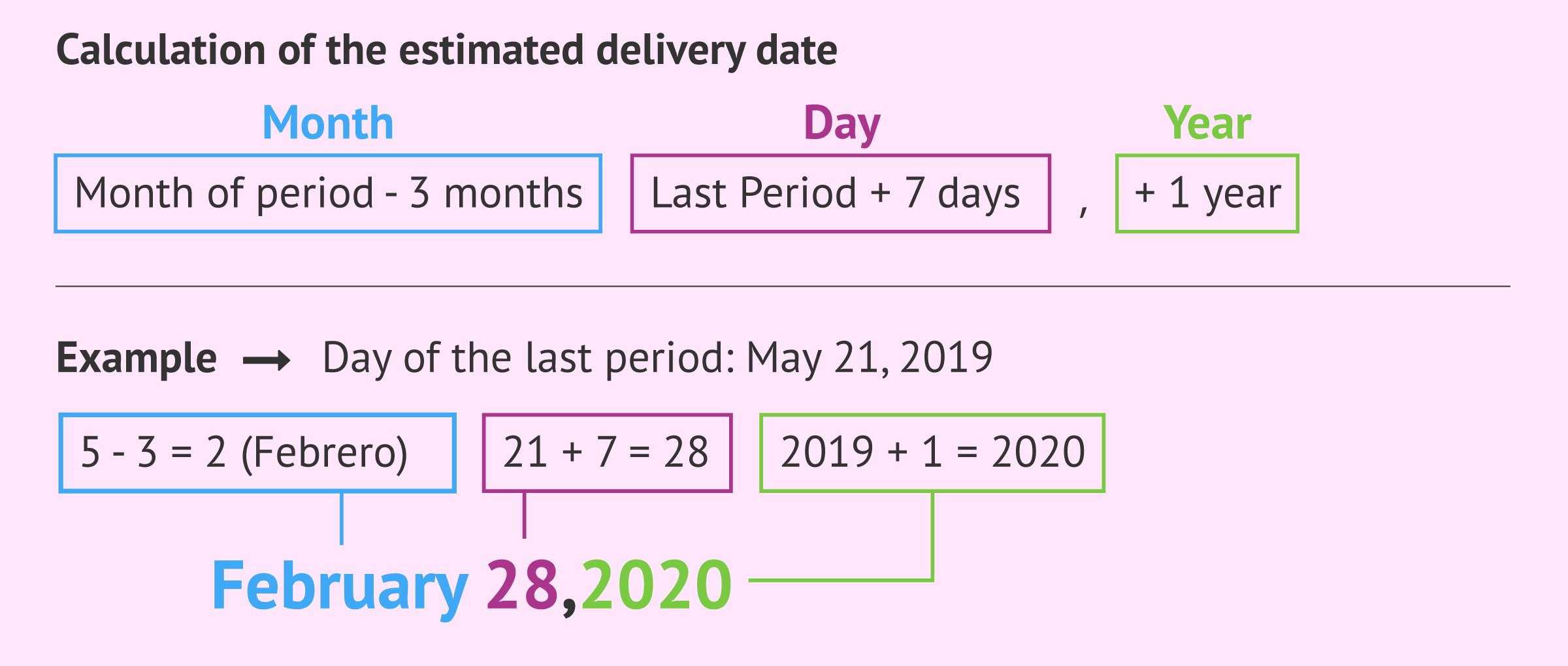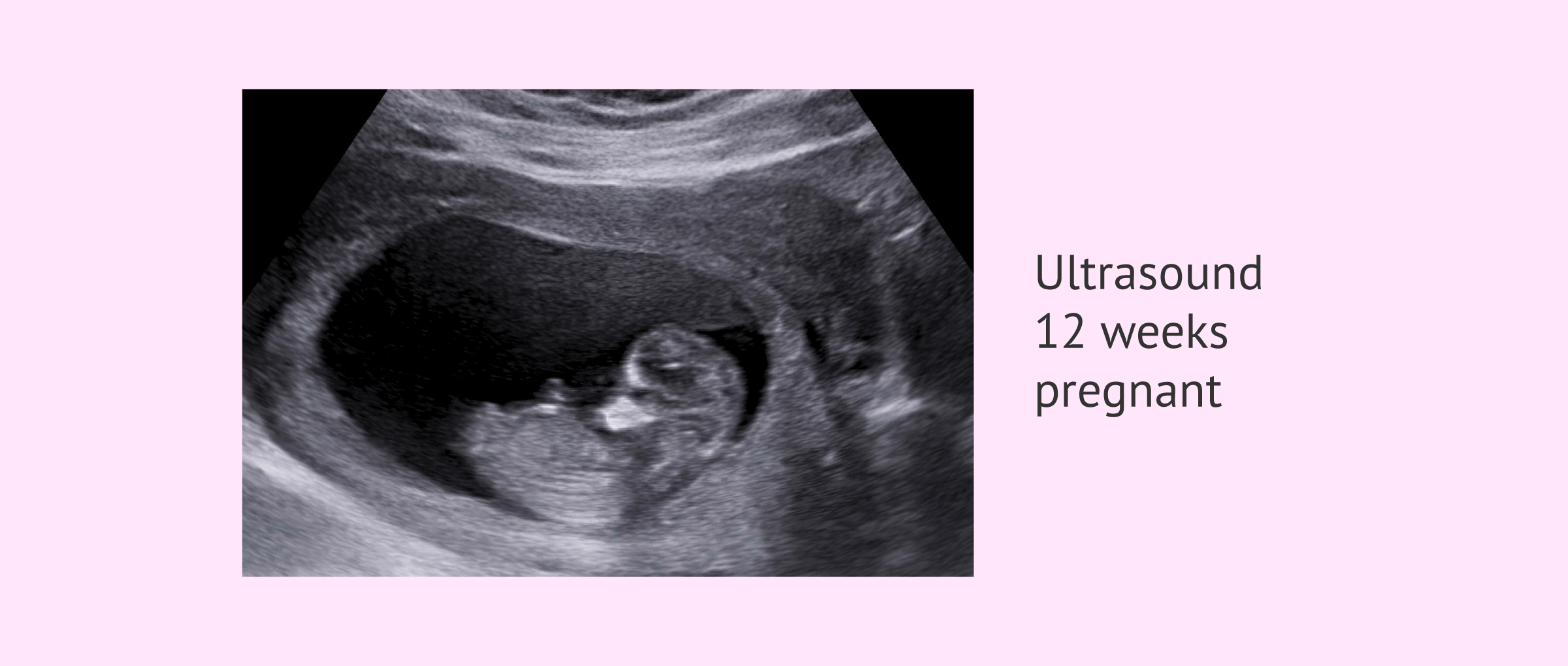After a positive pregnancy test result, you might think about when the day of birth will be.
Knowing the estimated date of delivery(EED), also known as expected date of confinement or simply due date, will only give you a rough idea, but it will not be 100% reliable. The reason for this is that the percentage of babies born on that supposed day is very low, as most babies are usually born early or late.
There are several methods to determine the probable date of delivery, although it may not be the day your baby is born. However, the date serves for orientation purposes for you and your family.
The date of the last menstruation (LMP) is an important data to calculate the time of your pregnancy, as well as the information provided by ultrasound scans on the development of your baby.
Provided below is an index with the 7 points we are going to expand on in this article.
- 1.
- 1.1.
- 2.
- 2.1.
- 2.2.
- 2.3.
- 3.
- 4.
- 4.1.
- 4.2.
- 4.3.
- 4.4.
- 5.
- 6.
- 7.
Pregnancy duration
Normally, it is logical for a woman to become pregnant at her last ovulation. However, this date is much more difficult to remember than that of the last menstruation.
If a pregnant woman knew the date of her last ovulation, the length of pregnancy would be 266 days, or nine months or 38 weeks.
On the other hand, if you do not exactly remember the date of your last ovulation, the date of the last menstruation will be taken into account, counting from the first day of your period. Therefore, it is also said that pregnancy lasts 40 weeks or 280 days.
The difference between 38 and 40 weeks is due to the 14 days from the first day of menstruation until the time of ovulation, when the egg is ready to be fertilized. Therefore, depending on the date taken into account, so will be the duration of pregnancy.
In any case, even if the exact day of fertilization were known with complete certainty, the date of delivery would remain a mere assumption.
Calculation of gestational age
Gestation is the time between conception and the birth of the baby, that is, the period in which the baby grows and develops inside the future mother.
The time of pregnancy, also known as gestational age, is a concept that is expressed in weeks taking into account the first day of the woman's last menstrual cycle until the current date. Therefore, the gestational age of a normal pregnancy can range from 38 to 42 weeks.
There is a mathematical rule for calculating gestational age, although it is important that the entire month has elapsed: Number of months of pregnancy multiplied by four and adding 2, 3 or 4 depending on whether you are in the 1st, 2nd or 3rd trimester of pregnancy respectively.
For example, a woman who is 5 months pregnant and therefore in the second trimester will have a gestational age of 23 weeks, as (5 x 4) + 3 = 23 weeks gestation.
Calculating the Estimated Delivery Date (EED)
A very exciting moment in life is to discover the positive result of a pregnancy test. In addition, most women want to know immediately when they will hold their babys in their arms. Therefore, there are several methods for calculating the due date.
The probable date of delivery is the estimated date for the end of pregnancy. Childbirth usually occurs between 38 and 42 weeks of gestation. This date is an approximate idea based on a difference of forty weeks from the first day of the mother's last menstruation. In addition, the day of delivery can also be calculated using ultrasound.
While this calculation is a mere approximation, it will help you be prepared in time for the baby's arrival.
In the next section, we are going to tell you about different methods to calculate the EED.
Counting weeks manually: Naegele’s rule
The Naegele’s rule is the most commonly used method for determining the due date. This is a mathematical formula that consists of adding seven days and one year (if necessary) to the date of the last menstruation (LMP), and subtracting three months from the month in which the LMP occurred. Therefore, the formula would be as follows:
- To find out the day: LMP + 7 days.
- To calculate the month: Mes of LMP - 3 months.
- If necessary, add one year.
The image below shows an example of the application of this mathematical rule. If a woman's LMP were May 21, 2019, the EDD would be February 28, 2020.
Therefore, the Naegele’s rule is a very simple formula that provides a fairly accurate delivery date. However, for this method to be reliable, prerequisites must be met:
- Regular menstrual cycles.
- Duration of cycles approximately 28 days.
- 40-week pregnancy.
Online Calculators
On the Internet it is possible to calculate the delivery date using free tools: calculators. In all of them, the date of the last period or the date of conception of the baby must be entered. The tool will then automatically calculate the EDD, although as mentioned above it will be an orientation.
After this approximate idea provided by online calculators, the doctor will give clearer information of when the birth will occur.
Ultrasound
The delivery date determined from the ultrasound is more reliable than if it is based on the menstrual cycle, as this date is related to the development of the baby in the woman's uterus.
As the weeks of pregnancy progress, the doctor will perform ultrasounds to measure the size of the baby. In this way, the specialist can evaluate your development and establish the possible delivery date.
The best time to do an ultrasound and know your due date is between weeks 8 and 18. Before week 8, the size of the fetus is difficult to measure.
This date is actually the correct one, and not the date of the last period. However, in most cases, both dates coincide. When this is not the case, the most reliable date is that provided by the ultrasound data.
Date of delivery after IVF
The great difference between a natural pregnancy and another achieved through in vitro fertilization (IVF) lies in the possibility of perfectly determining the beginning of gestation.
With assisted reproduction treatments we are able to know the exact moment in which ovulation or fertilization has taken place, as well as the days that the embryo had when it is transferred to the woman's uterus.
In an IVF treatment, the woman is given medication and ovulation occurs at 36 hours, when the ovarian puncture is performed to extract the eggs. Therefore, two weeks before will be the date of last theoretical menstruation, which will help to date the pregnancy.
On that day, the extracted eggs are put in contact with the spermatozoa so that fertilization can take place and it will be the day zero of the embryo. The embryos generated are cultured in the laboratory until they are transferred to the woman's uterus or frozen.
In order to calculate the time of pregnancy, the day on which the embryos were generated (union of the ovum with the sperm) is considered to be the 14th day of the cycle. So, if the embryos are transferred in:
- Day 3: the woman is on day 17 of the cycle (14+3), setting the last menstruation period 17 days before the transfer. Therefore, the weeks of pregnancy would count from this LMP. Another option would be to add 263 days to the transfer date.
- Day 5: This means that the embryo was fertilized 5 days earlier (even if it was frozen). In this case, the day of the transfer corresponds to the 19th day of the cycle (14+5), so that the theoretical LMP of the patient would be 19 days before the transfer. Another simple alternative would be to use the embryo transfer date and add 261 days.
For example, if on October 20, a woman is transferred an embryo on day 5, the theoretical LMP would be October 1. The EDD will therefore be on July 8, 2020.
In the case of IVF treatments with egg donation, it will be the same as in an IVF treatment, i.e. the time of the donor's ovarian puncture is taken as day 0 and the LMP is determined 14 days before. In this way, a pregnancy can be imitated naturally.
FAQs from users
How do I calculate the weeks of pregnancy after frozen embryo transfer?
In pregnancies achieved with frozen embryo transfer, your gynecologist will accurately calculate the weeks of pregnancy, which may not coincide with the time elapsed since the date of your last menstruation. In this case, the specialist assigns a date of last theoretical menstruation.
In this way, if the freezing is carried out on the 5th day of development, the day of the transfer would be the 19th day of the cycle (14+5), setting the date of the last menstrual period 19 days before the transfer. Therefore, the weeks of pregnancy would count from this day.
On the other hand, if the embryos were 3 days old, the day of the transfer would be considered the 17th day of the cycle (14+3).
Read more
What is a gestogram?
A gestogram, also called a pregnancy wheel or gestational calculator, consists of a circular pregnancy calculator. In this way, it is possible to calculate from how many weeks of pregnancy the woman is, as well as the possible delivery date.
Why is it so important to know the gestational age?
Knowing the gestational age is important to be able to calculate the possible date of birth, although it is also vital to perform pregnancy control tests on the corresponding dates. In this way, it is possible to check that the growth of the fetus is correct in the weeks of pregnancy.
What is the estimated date of delivery in twin pregnancies?
If it is a twin pregnancy or a multiple pregnancy, labor occurs earlier than in a single pregnancy.
In the case of two babies, the average length of pregnancy is usually 37 weeks. It is also important to know that more than half of all twins are born prematurely.
Suggested for you
Adequate monitoring of the entire pregnancy is essential to detect possible alterations and prevent them in time. You can read more about it here: What are the methods for calculating the due date?
If you also want more information about the time of delivery, we recommend you visit the following link: Childbirth: preparation, types and possible complications
We make a great effort to provide you with the highest quality information.
🙏 Please share this article if you liked it. 💜💜 You help us continue!
References
Bergh J. Should ultrasound examination be performed earlier in pregnancy? Tidsskr Nor Laegeforen. 1992 Nov 10;112(27):3450-1.
Fouché LC, Kritzinger A, Le Roux T. Corrigendum: Gestational age and birth weight variations in young children with language impairment at an early communication intervention clinic. S Afr J Commun Disord. 2019 Sep 12;66(1):622. doi: 10.4102/sajcd.v66i1.622.
Husby A, Wohlfahrt J, Melbye M. Pregnancy duration and endometrial cancer risk: nationwide cohort study. BMJ. 2019 Aug 14;366:l4693. doi: 10.1136/bmj.l4693.
Klinger G, Fritzsche H, Kunath H. Determination of pregnancy duration following terminated hormonal contraceptionZentralbl Gynakol. 1977;99(26):1629-32.
Lieser H, Müller D, Tietze KW, Rathgen GH. The importance of ultra-sound cephalometry for the prediction of the date of delivery--a contribution to the assessment of duration of pregnancy. Z Geburtshilfe Perinatol. 1975 Apr;179(2):119-24.
Loytved CA, Fleming V. Naegele's rule revisited.Sex Reprod Healthc. 2016 Jun;8:100-1. doi: 10.1016/j.srhc.2016.01.005.
Ramaswamy VV, Singh A. Can Small for Gestational Age Status Affect the Weight-based Formula for Calculation of Insertional Length of Endotracheal Tube in Neonates? Indian Pediatr. 2019 Aug 15;56(8):694-695.
FAQs from users: 'How do I calculate the weeks of pregnancy after frozen embryo transfer?', 'What is a gestogram?', 'Why is it so important to know the gestational age?' and 'What is the estimated date of delivery in twin pregnancies?'.





